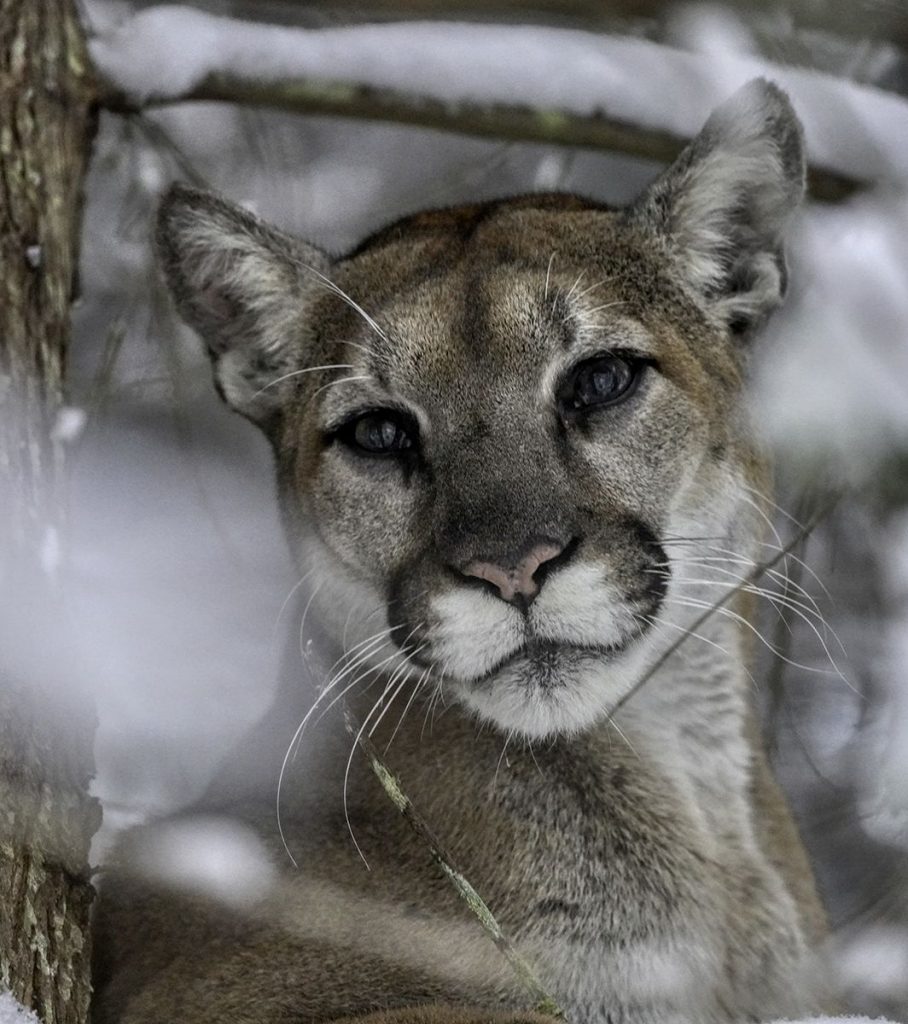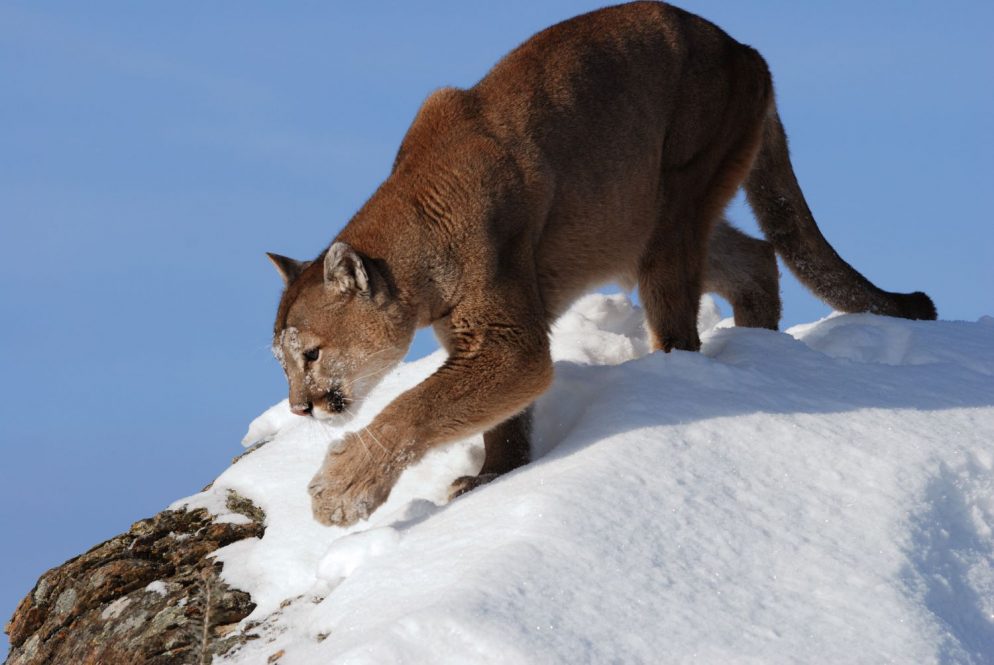If GPS data from someone’s phone tells you they are in a grocery store at 10 a.m. on a Saturday, you can assume they are shopping for their weekly meals.
The same idea applies to tracking apex predators in the wild. Knowing where and when these animals spend their time gives scientists insight into the habits of animals that are otherwise hard to observe – like wild cats.
A group of UConn researchers has developed a model for tracking apex feline predators in the wild, using mountain lions as their first subjects.
Mountain lions are reclusive animals that live in remote areas and like to keep their distance from humans. Because of this behavior trait, GPS tracking can provide unprecedented understanding of how these animals live.

“Just watching them walk around gave insights that were brand-new,” says Professor Tom Meyer from the College of Agriculture, Health and Natural Resources. “People had never done that before.”
Meyer, an engineer and GIS specialist in the Department of Natural Resources and the Environment, has been working on an interdisciplinary team that has been tracking mountain lions since 2010, coming together through a grant from the Center for Environmental Sciences and Engineering. The team includes wildlife biologist Mark Elbroch at Panthera, UConn professors of statistics Jun Yan and Vladimir Pozdnyakov, and Chaoran Hu, who received his Ph.D. in statistics from UConn in 2020.
The group published their first paper in Population Ecology in 2014. In this paper, they outlined the model they used to study how mountain lions move. The model accounts for something other models miss – the fact that, just like housecats, these feline predators spend large portions of the day resting and sleeping.
The group assumed that the animals will either be in a resting or a moving state. And when they’re moving, they’re engaged in something known as Brownian motion. Brownian motion is random movement, as opposed to moving in a pattern.
The model has four parameters: how long the animal moves, how long it rests, how fast it moves, and the GPS measurement error. The GPS measurement error for the model matches the known error for GPS technology, supporting the model’s accuracy.
Using this information, the model makes a prediction about what the animal is doing at a certain location at a specific time: resting or moving.
“For every animal, we fit the model and we use these four parameters as a summary for that animal,” Yan says.
Now, the group is partnering with Associate Professor Tracy Rittenhouse in the Department of Natural Resources and the Environment and the Connecticut Department of Energy and Environmental Protection to use their model to track bobcats in Connecticut.
Bobcats, the only wild cats found in Connecticut, are apex predators in the state. Since 1972, when Connecticut reclassified the animal as a protected furbearer, the bobcat population has rebounded to an estimated 1,500 across the state.
The model the team developed for mountain lions will likely work well with bobcats since the two animals have similar movement patterns, both being large feline predators.
Animals like deer, which tend to follow the same paths every day, would not be a good fit for this model. Similarly, the model would not work for predators like sharks that never stop moving.
“If an animal moves in a very regular pattern, it wouldn’t fit the model,” Yan says. “The model isn’t designed for these animals.”
The model may also help researchers answer biological questions like how many calories these predators need to consume.
Studying apex predators is critical to understanding how to keep our ecosystems healthy.
The well-known example of the elimination and reintroduction of wolves at Yellowstone National Park highlights this. Without any natural predators, the deer population soared, and the deer began over-grazing, sending the entire ecosystem into freefall. When the wolves were reintroduced, the deer population dropped, and the ecosystem was restored.
“Apex predators are the lynchpins in our ecosystems, and having a good understanding of the realities of how the apex predators live their lives is crucial for understanding the proper and reasonable way to manage the ecosystems in which we live,” Meyer says. “Until we know what the facts are, we’re just guessing.”
Follow UConn CAHNR on social media



